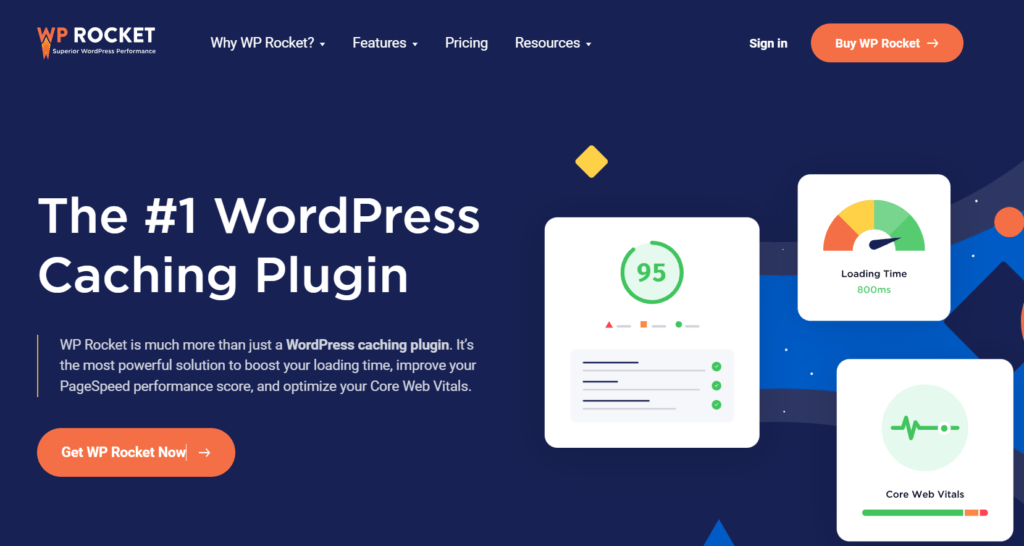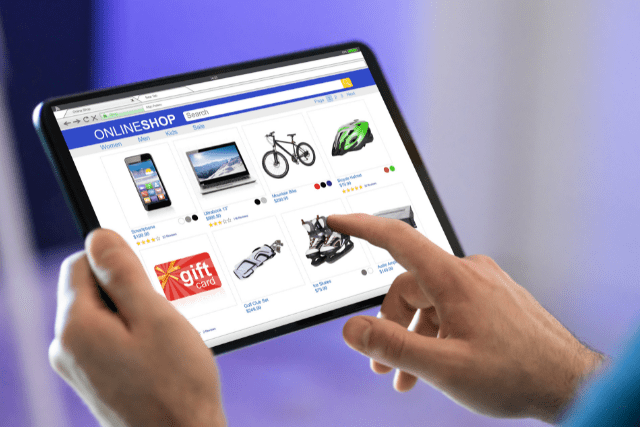Search engine optimization (SEO) is a must-have skill for e-commerce website owners who want to succeed in the highly competitive online marketplace. With proper implementation, SEO can dramatically improve your website’s visibility, traffic, and conversion rates.
This blog post provides practical tips on optimizing your e-commerce website and building a foundation for long-term success. So let’s dive into how to optimize your e-commerce site for search engines!
Table of Contents
Key Takeaways
- E-commerce SEO involves optimizing a site for leads and conversions, not just adding keywords, writing blog posts, and gaining links.
- Best practices for e-commerce SEO include keyword research, optimizing product pages, improving site structure, and building quality backlinks.
- Mobile optimization and site speed are crucial for e-commerce websites.
- Regular monitoring and analysis of SEO performance are essential for identifying areas for improvement and staying ahead of the competition.
Understanding the Basics of SEO
You can gain free organic traffic from search engines and boost your ecommerce store’s visibility by understanding SEO basics! There are many benefits to optimizing a website for search engine algorithms, including improved user experience, better rankings, and increased conversions. To get started on the right foot, keyword research is essential. You can use keyword tools such as Ubersuggest and Answer The Public to help you determine the best keywords to target.
Additionally, on-page optimization techniques, such as optimizing page titles and meta descriptions, should be used to maximize SEO benefits. Furthermore, mobile optimization strategies must be implemented to ensure users have a smooth browsing experience. By incorporating these tactics into your SEO strategy, you will be well on your way to improving your website’s visibility in SERPs. Now let’s look into how you can effectively approach keyword research!

Keyword Research
Doing keyword research is crucial for getting the most out of your e-commerce store’s SEO. It involves understanding the differences between long tail and short tail keywords, creating keyword buckets to target specific areas, analyzing competitors’ strategies to gain insight into potential opportunities, determining keyword intent by looking at SERPs, targeting a natural keyword density so as not to appear spammy, and much more.
If you are looking for best rated software tools for doing keyword research, here is an amazing post for you:
Top 13 Best Keyword Research Tools For Online Sellers (Free and Paid)
Optimizing Titles and Meta Descriptions
Crafting effective titles and meta descriptions can skyrocket your e-commerce store’s SEO success, rocketing it to the stratosphere! Improving click-through rates (CTR) from search engine listings is one of the best ways to maximize organic traffic. Analyzing SERPs for your target keywords can help you craft compelling titles utilizing rich snippets that are more likely to be clicked on by users.
Writing effective meta tags and descriptions that accurately describe the page’s content is also essential to improve CTR and optimize content for search engines. By utilizing all these tactics, you can boost your e-commerce store’s organic visibility, driving more qualified traffic and leads!
Also, read:
- Writing compelling product descriptions using ChatGPT
- How to Write Appealing Product Descriptions for Your Store on Amazon
- Learn The Art of Crafting Good Product Titles
Optimizing Content for Search Engines
Boosting your organic visibility and driving more qualified leads is as easy as optimizing content for search engines! Content optimization tips are essential to ensure that your ecommerce store can be found by potential customers.
SEO-friendly product descriptions should include relevant keywords targeted to the user’s search intent. Remembering the importance of user experience in SEO since a positive customer experience will result in higher rankings on search engine results pages (SERPs). Mobile optimization strategies must also ensure that all customers browsing from their phones have an optimized experience.
Finally, please take advantage of customer reviews for SEO, as they will give you valuable insights into what people think about your products and help boost your website’s rankings.
Optimizing Images for SEO
Optimizing your images for SEO can be like painting a masterpiece – it takes time, effort, and skill to create something that stands out and catches the eye.
To build an effective visual content strategy, there are several important image optimization tips to consider:
- use descriptive alt text for all images,
- choose the right file format for web page loading speed and quality,
- compress image files without compromising on quality,
- utilize best practices for image size and resolution, and
- take advantage of various image editing tools.
Utilizing Internal Linking Strategies
You can amplify your website’s SEO efforts by leveraging internal linking strategies. Internal links are an excellent way to boost visibility, strengthen SEO rankings, and improve user experience. With proper optimization of anchor text, cross-linking of relevant pages, and link juice distribution through content silos, you can ensure that all pages on the site get maximum exposure.
By utilizing these internal linking strategies, you can optimize your website for search engine bots better while providing a better overall user experience. This will help drive more organic traffic and increase your visibility in SERPs.
Building Quality Backlinks
High-quality backlinks can help drive organic traffic and visibility to your ecommerce store, helping you stand out from the competition. Quality link building involves a variety of strategies, such as influencer outreach, broken link building, content marketing, social media ads, and press releases. Reaching out to the right influencers can help spread brand awareness and build credibility for your store.
Broken link building involves finding relevant pages with dead links and offering to replace them with freshly updated content related to your store. Content creation is also important to create shareable material that other websites are willing to link back to. Social media ads and press releases are also great ways of gaining high-quality backlinks that will help boost SEO rankings.
Utilizing Structured Data
Utilizing structured data can help ensure that search engines quickly index and understand your ecommerce store, allowing customers to find what they’re looking for easily. Rich snippets and schema markup are essential for improving search engine visibility and SERP optimization.
By implementing these tools onto product pages, category pages, and other important website areas, you can provide a more user-friendly experience while also helping your rankings on the SERPs.
Setting Up a Sitemap
Creating a sitemap ensures that search engines can easily crawl and index your website, allowing customers to find what they want quickly. A well-structured sitemap will help ensure your pages are indexed correctly and improve the user experience. Here are some key points to consider when setting up a sitemap:
- XML Sitemaps offer many benefits, including increased indexability of all pages on your site
- Optimizing the structure of your sitemap helps search engine bots understand how content is organized
- The submission process for submitting a sitemap to search engines should be done with care and attention
- Ensuring that security measures are in place is essential for protecting customer information. These steps can help you create an effective sitemap setup and provide better customer visibility.
Ensuring Site Security
Ensuring the security of your website is essential to keep customer information safe. Implementing an SSL certificate is one way to ensure data encryption between the web server and browser and authenticate the website for visitors. Firewall protection can block malicious requests from entering your site, while a secure payment gateway will protect customers when making transactions online.
It’s also important to protect against malware by regularly scanning your system and monitoring any suspicious activity. Finally, regular security audits should be conducted to identify potential vulnerabilities or weak spots in the system.
This ensures that all customer information remains secure and protected, providing them peace of mind while shopping on your ecommerce site. To further optimize for search engines, it’s important to create an SEO-friendly URL structure that makes it easy for search engine crawlers to index pages accurately and quickly.

Creating an SEO-Friendly URL Structure
Ensuring your website is ready for the web involves crafting an SEO-friendly URL structure that’ll help visitors easily navigate while giving search bots cues to index pages accurately. Optimizing product pages and creating a clear URL hierarchy are essential steps to achieve this. Breadcrumb navigation also helps improve user experience and should be implemented accordingly.
It’s important to avoid duplicate content using unique URLs, which can be accomplished through well-thought-out site architecture and mobile optimization. Lastly, breadcrumbs can also help create a logical path for visitors so they don’t get lost on your website.
Enhancing Site Speed
We know that one of the key elements to a successful ecommerce website is improving usability. From mobile optimization to reducing bounce rate, these strategies are essential for an online store to be successful.
Enhancing site speed also plays a big part in improving user experience and can significantly impact SEO performance. To enhance site speed, there are several steps you can take, such as optimizing content, compressing images, minimizing redirects, and streamlining navigation.
This will help reduce page loading times, improve user experience, and reduce bounce rate. By taking these steps, you’ll be able to provide your customers with a great online shopping experience while boosting your SEO performance – all of which leads to higher profits! Now, let’s move on to tracking your progress with analytics and see how far we’ve come.
If your site is built on WordPress, we recommend WP Rocket, one of the most powerful caching tools by WordPress experts. It is an all-in-one web performance plugin that helps optimize websites for the Core Web Vitals3. WP Rocket is easy to use and delivers results out of the box, with 80% of web performance best practices applied upon activation.
WP Rocket has a wide range of advanced options, such as lazy loading for images, XML sitemaps preloading, Google Fonts optimization, CSS and JS minification, deferred loading of JS files, database optimization, etc.

Tracking Your Progress with Analytics
Tracking progress with analytics is essential for a successful ecommerce website, as it allows you to identify areas that need improvement and gain valuable insights into customer behaviour.
Analyzing metrics, setting goals, utilizing tools, identifying trends, and making data-driven decisions are all important aspects of tracking progress. By leveraging these strategies regularly and using the right tools, such as Google Analytics or Hotjar, you can track your website’s performance in real-time to make informed decisions on optimizing your website for success.

Leveraging Social Media
Now let’s look at leveraging social media to optimize your ecommerce site for search engines. Social media engagement, influencer marketing, online brand reputation, user-generated content, and social media advertising are all important elements of successful ecommerce SEO. Unordered bullet list in markdown format:
- Utilize influencer marketing to build a strong online presence.
- Monitor customer feedback and reviews to maintain an excellent reputation.
- Create unique content that resonates with your audience
- Invest in targeted ads on social media platforms to reach potential customers.
We can use these techniques to improve our ecommerce website’s ranking in SERPs and increase organic traffic.
Utilizing Paid Ads for Higher Rankings
Boost your online visibility and reach potential customers by investing in targeted ads on social media platforms! Advertising on sites like Google Ads and Facebook Ads effectively drives traffic to your ecommerce site and increases conversions. When it comes to paid ads, the key is creating a strategy to target the right audience.
You should include keywords in your ad copy and use dynamic search ads to optimize for different queries. It’s also important to measure your campaigns’ return on investment (ROI) so that you can adjust them accordingly. With the right paid ads strategy, you can dramatically improve your rankings in search engine results pages.
Frequently Asked Questions
What is the difference between short-tail and long-tail keywords?
We understand the importance of keywords in ecommerce SEO, and one of the key factors to consider when formulating a successful SEO strategy is the difference between short-tail and long-tail keywords. Short-tail keywords are broad, generic terms with higher search volumes but less specificity, making it harder to target relevant customers. On the other hand, long-tail keywords are much more specific and usually have lower search volumes but can be used for targeted link-building and competitor analysis. With an effective keyword research process combined with content marketing strategies like synonyms and quality backlinks, you can use short-tail and long-tail keywords to maximize your ecommerce SEO potential!
How do I optimize a 404 page?
We all know that a 404 page can be a major obstacle when optimizing our ecommerce sites for search engines. To avoid this, we should ensure that our pages are tracking errors effectively, have a responsive design, including meta tags, and have optimized site speed. Quality content is key; having a unique and engaging copy will ensure visitors stay on your page longer and improve their chances of purchasing. By following these steps, you will be well on your way to an optimized ecommerce website that will rank higher in search engine results!
How can customer reviews help improve SEO?
We can use customer reviews to improve SEO and help boost brand visibility. Adding customer reviews on product pages can increase keyword optimization, content relevance, internal linking, and page speed. This will help increase search engine rankings and make our site more visible to potential customers. Customer reviews add credibility and trustworthiness to the website, which is important in today’s online marketplaces.
How do I effectively use A/B testing to improve website performance?
We use A/B testing to improve website performance by split-testing key phrases, optimizing meta tags, building links, and improving site structure. This helps us optimize the site for better user experience and search engine rankings. A/B testing allows us to test different versions of content or pages on our website to see which version is most effective. By doing this, we can identify which elements are working best so that we can focus our efforts on those areas. It also gives us insight into what customers like and don’t like about our page design and content, allowing us to make necessary changes for a better overall user experience.
What is the best way to use social media for SEO?
Social media can be a powerful tool for SEO when used correctly. By engaging in influencer marketing, link building, and content strategies, businesses can leverage the power of social platforms to boost their online visibility. These tactics can help build relationships with customers and create brand awareness. To maximize the impact of social media on SEO, businesses must use meta tags and keyword research to ensure that their posts are being seen by the right people. With careful planning and execution, social media can drive traffic to your ecommerce site and increase sales.
Conclusion
We’ve discussed various strategies to help you optimize your e-commerce site for search engines. From tracking progress with analytics and utilizing social media to leveraging paid ads, these tactics can result in higher rankings, increased visibility, more traffic, and, ultimately, more conversions.
To illustrate the importance of optimization, consider this: research shows that 90% of online experiences begin with a search engine! As such, it’s essential that your e-commerce site is optimized for success. Now that you know necessary to make an impact, what are you waiting for? It’s time to start optimizing your e-commerce site now!







